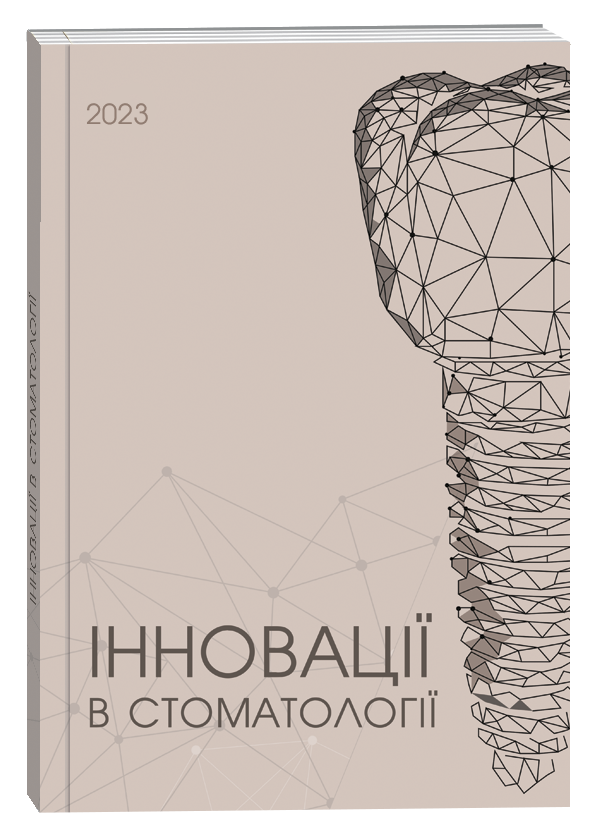FEATURES OF THE STRUCTURE OF THE FACIAL SKULL OF PATIENTS WITH DISTAL OCCLUSION, TAKING INTO ACCOUNT THE DIRECTION OF JAW GROWTH
DOI:
https://doi.org/10.35220/2523-420X/2025.1.21Keywords:
distal occlusion, teleradiographs, apical base, angular parameters, childrenAbstract
Distal occlusion in children and adolescents is accompanied by a complex set of craniofacial alterations whose severity depends on the prevailing direction of jaw growth. Aim.To evaluate the craniofacial morphology of patients with distal occlusion, taking horizontal, vertical, and neutral growth patterns into account. The purpose of the study was to evaluate the structural features of the facial skull in patients with a distal occlusion, taking into account the direction of jaw growth. Materials and methods.Eighty-nine patients aged 8–16 years were examined; 52 underwent an in-depth assessment of study casts and were allocated to three etiological subgroups.To determine the structural features of the facial skull in patients with a distal occlusion, 14 angular and 9 linear parameters were studied; statistics were performed in Microsoft Excel 2016 using Student’s t-test (p < 0.01).Research results. Irrespective of growth direction, patients demonstrated an altered relationship between the mandibular ramus and body and a clockwise rotation of the occlusal plane. Horizontal growers exhibited an anticlockwise rotation of the mandibular plane, reduced posterior lower facial height, and a decrease in total facial height. Vertical growers showed mandibular and chin retrusion, shortening of the mandibular ramus, and a clockwise rotation of the mandibular plane.Neutral growers displayed moderate changes without pronounced retrognathia but with a consistent reduction in anterior facial height. Conclusions. Distal occlusion is associated with a reproducible pattern of craniofacial disproportions that varies with jaw-growth direction and should be considered when planning orthodontic treatment to shorten its duration and prevent complications.
References
de Lira Ade L., Prado S., Araújo M. T., Sant’Anna E. F., Ruellas A. C. Distal movement of upper permanent molars using midpalatal mini-implant. Dental Press J Orthod. 2013 Mar 15. Vol. 18. № 2. P. 18.e1-5. doi: 10.1590/s2176-94512013000200006
Gianelly A. A. Distal movement of the maxillary molars. Am J Orthod Dentofacial Orthop. 1998 Jul. Vol. 114. № 1. P. 66–72. doi: 10.1016/s0889-5406(98)70240-9
Alshammari A., Almotairy N., Kumar A., Grigoriadis A. Effect of malocclusion on jaw motor function and chewing in children: a systematic review. Clin Oral Investig. 2022 Mar. Vol. 26. № 3. P. 2335–351. doi: 10.1007/s00784-021-04356-y. Epub 2022 Jan 5.
De Ridder L., Aleksieva A., Willems G., Declerck D., Cadenas de Llano-Pérula M. Prevalence of Orthodontic Malocclusions in Healthy Children and Adolescents: A Systematic Review. Int J Environ Res Public Health. 2022. Vol. 19. № 12. P. 7446. doi: 10.3390/ijerph19127446
Londono J., Ghasemi S., Moghaddasi N., Baninajarian H., Fahimipour A., Hashemi S., Fathi A., Dashti M. Prevalence of malocclusion in Turkish children and adolescents: A systematic review and meta-analysis. Clin Exp Dent Res. 2023. Vol. 9. № 4. P. 689–700. doi: 10.1002/cre2.771
Caruso S., Nota A., Ehsani S., Maddalone E., Ojima K., Tecco S. Impact of molar teeth distalization with clear aligners on occlusal vertical dimension: a retrospective study. BMC Oral Health. 2019. Vol. 19. № 1. P. 182. doi: 10.1186/s12903-019-0880-8
Köle H. Surgical operations on the alveolar ridge to correct occlusal abnormalities. Oral Surg Oral Med Oral Pathol. 1959. Vol. 12. № 5. P. 515–29 concl. doi: 10.1016/ 0030-4220(59)90153-7
Фліс П. С. Ортодонтія. Вінниця: Нова книга, 2007. 312 с.
Рогач І. М., Керецман А. О., Сіткар А. Д. Правильно вибраний метод статистичного аналізу – шлях до якісної інтерпретації даних медичних досліджень. Науковий вісник Ужгородського університету. 2017. Вип. 2. С. 124–28.







